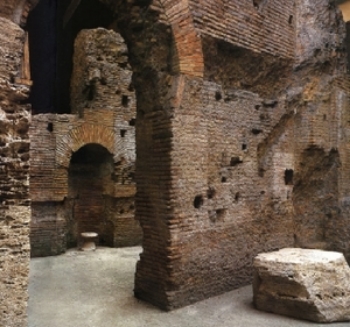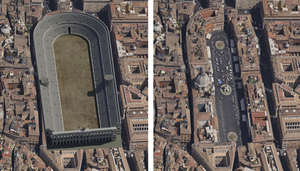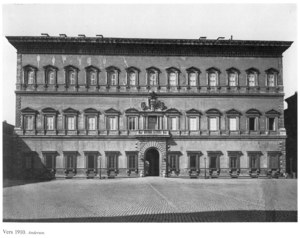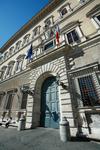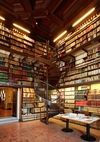École française de Rome
The École française de Rome is an important institution devoted to historic and archaeological research and social science.
Since 1876, the School, derived from the experience of the Institution of archaeological correspondence, and its Library (essential research source for Italian and foreign researchers) is located in the beautiful Palazzo Farnese – example of XVI century renaissance architecture, built by Antonio da Sangallo il Giovane, Michelangelo Buonarroti and Giacomo della Porta - that hosts also France’s Embassy in Italy.
The École is present at other two prestigious locations in Rome: one in Piazza Navona, that will host the first day of the convention “Anthropology and Archaeology compared”, and Crypta Balbi, at via dei Delfini 14, that hosts the archaeology office of EFR, proof of the strong relationship with Rome’s Soprintendenza Archeologica.
Through the archaeological service, the School offers scientific and practical assistance to French and Italian researchers: from archaeological surveys to sites and building reconstructions, thanks to the work of qualified architects.
The EFR’s excavations have found, indeed, a rich documentation stored in an archive, a real physical space, where each document has been registered by site, or by topographic location and catalogued in photographical and topographical archives and, at a later stage, in collections organized by numbers.
Furthermore, as already mentioned, the Library, built since 1837 thanks to some private donations and to a specific endowment of the Ministry of Education, is closely related to the École. Its public is constituted by 2000 readers from 35 different countries.
Its patrimony is represented by a particularly rich collection of books dedicated to archaeology, to the history of the ancient Mediterranean world and to Church’s history. The Library has also a fund specialized in law, donated by the family of the renowned jurist Edoardo Volterra, open to the public since 1989.
The Domitian Stadium
Domitian enriched the entertainment buildings of the ancient Rome with the construction of a stadium, an odeon and a naumachia.
The stadium was built in 86 a.D on the border of the developed part of Campo Marzio, close to Nero’s and Aggrippa’s thermal baths, in the same location where Nero had previously built a stadium to complete its thermal complex.
The name derives from stadion, the unit of measure equivalent to 600 feet (180 meters circa), the distance covered during the race competition, the most important one. Originally, in the Greek world, they used a simple flat area for athletic competitions and only later the competition space became an elongated rectangle placed against a hill or dug between two hills, thus allowing them to place the audience’s seats on the side of the hills, built as terraces carved into stone or formed by pressed clay.
The Domitian Stadium is the only example of masonry stadium known to date outside the Greek and Eastern world; before its construction the athletic competitions were held at Circus Maximus or Circus Flaminio; moreover contemporary sources attest how temporary wooden stadiums were built in the occasion of athletic games: Svetonio (Caes.39,3) recalls the wooden stadium built by Cesar in 46 b.C and Cassio Dione (53, 1, 5) cites the one wanted by Augustus in 28 a.D. It was common among emperors, to win the favour of the people, to organize games or establish new ones as Domitian did with the Certamen Capitolino Iovi, musical, equestrian and athletic games to be disputed every 4 years, following the Greek tradition and directly inspired by the Greek Olympics.
The stadium hosted the athletic part (certamen gymnicum) of the games, that included, other than the competitions among athletes also a race contest amongst young girls, as was done in Sparta. The competitors were professional athletes, the majority came from Greece; the participation to the Certamen Capitolino Iovi was considered very important to the extent that inscriptions on funerary stones has been found citing a victory achieved during the competition.
The price for winners was a crown made of oak and olive leaves, the trees sacred to Jupiter and Minerva.
The certamina gymnica were disputed for many years in the stadium even after the advent of Christian religion and the abolition of violent games in amphitheatres.
(Texts and images by www.stadiodomiziano.com)

